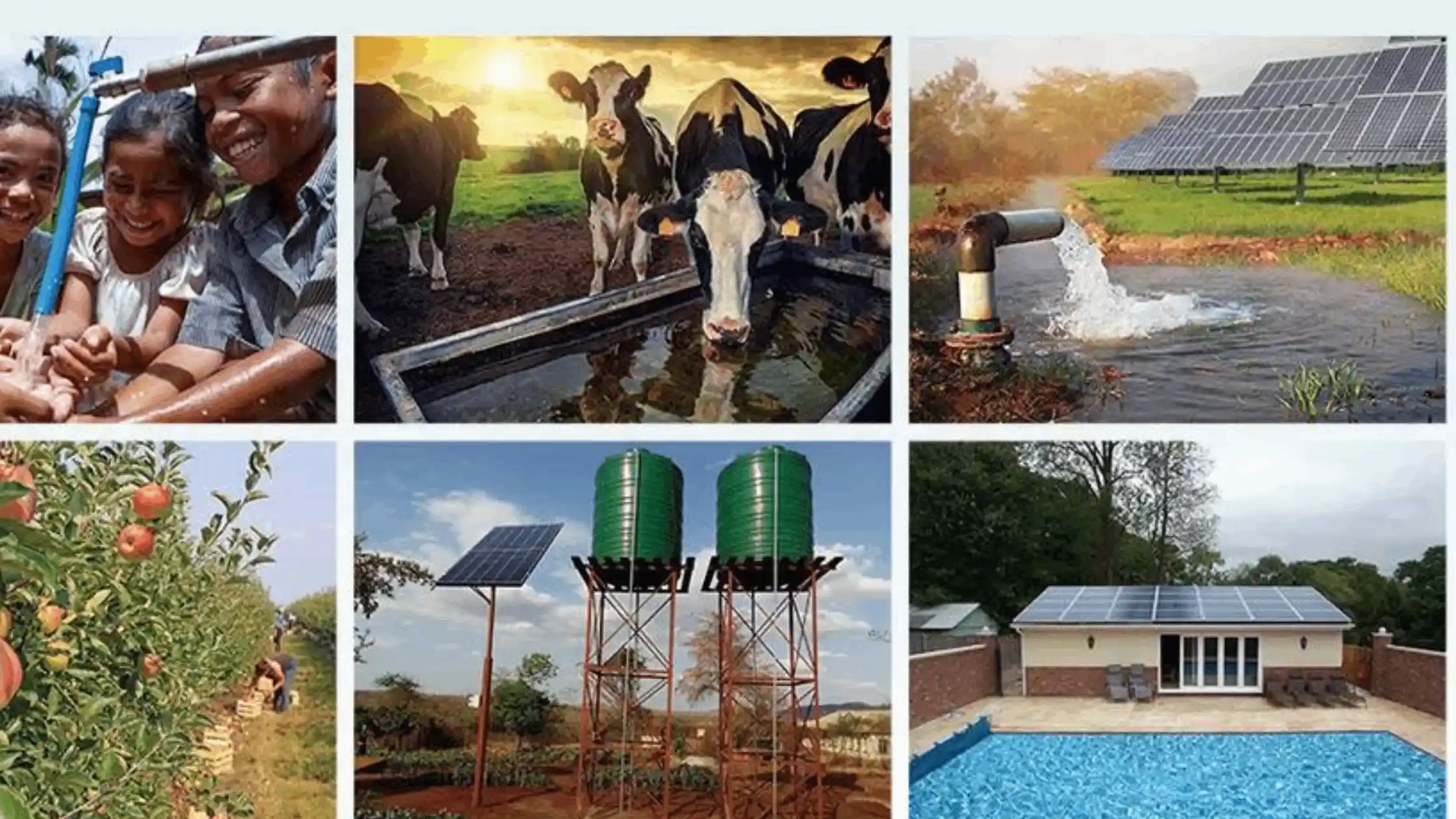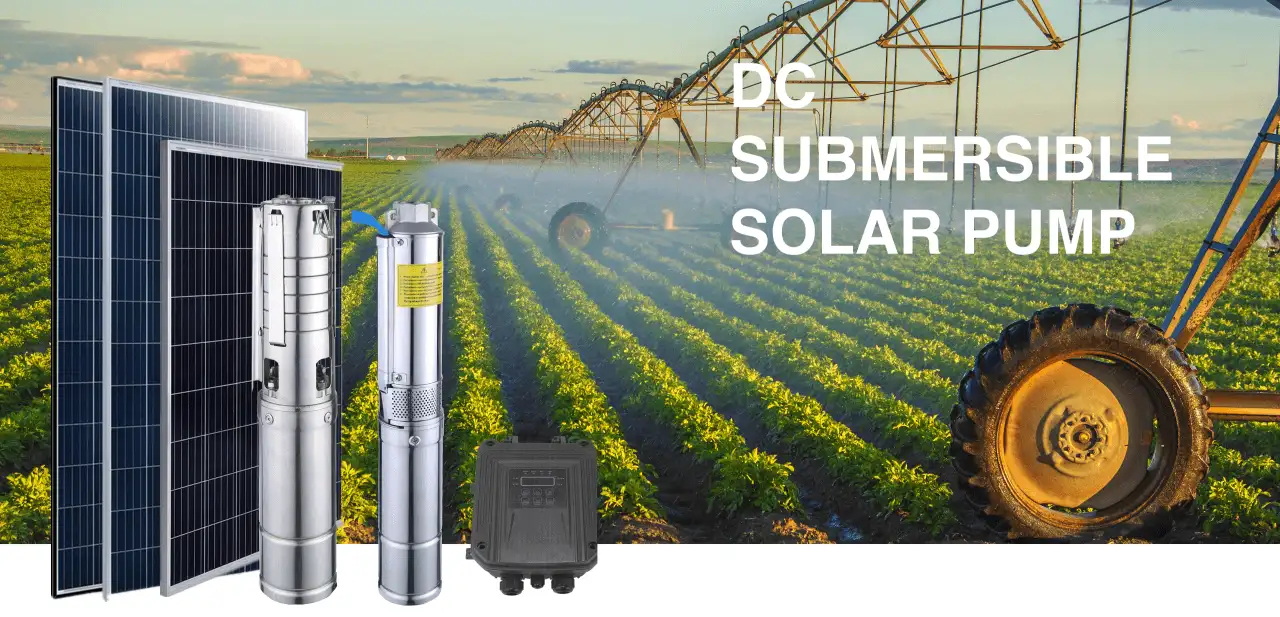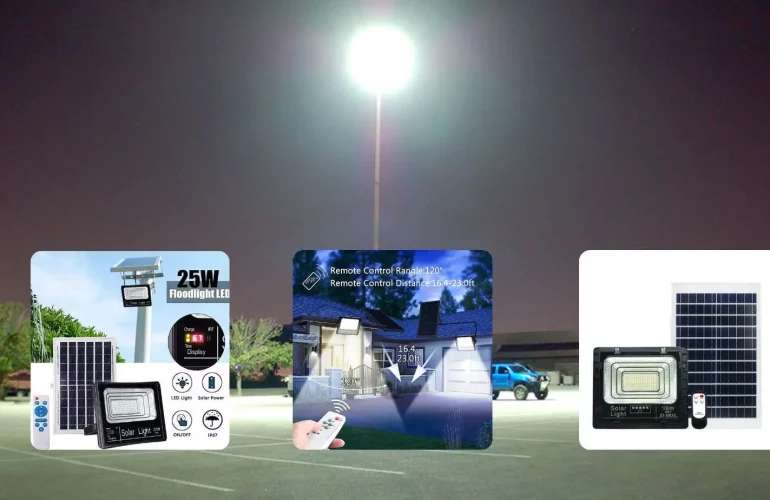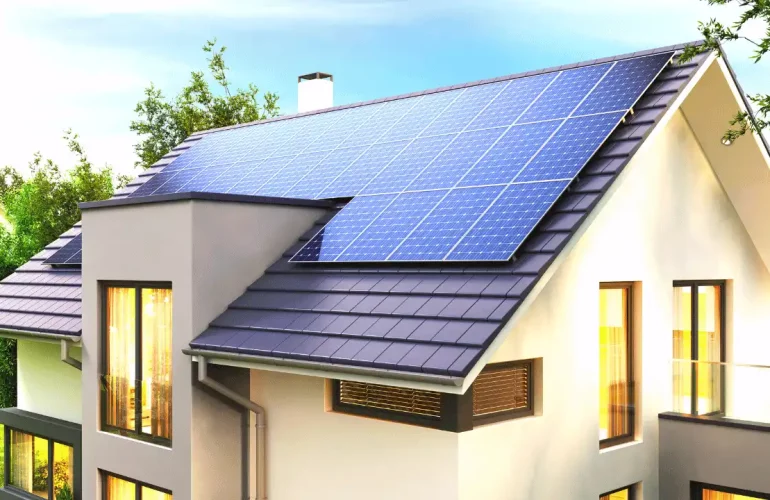Submersible Solar Water Pump Benefits in Uganda: Improving Access to Clean Water
Having access to clean water to drink is critical for human health and well-being. Regrettably, millions of Ugandans continue to lack access to safe and clean water, which leads to waterborne infections and poor hygiene. Conventional water pumping technologies, such as hand pumps and diesel generators, are sometimes unreliable and expensive in Uganda’s rural villages.
Submersible solar water pumps, on the other hand, are a long-term and cost-effective alternative for providing clean water to communities.
These pumps use the sun’s energy to pump water from underground sources such as boreholes and wells, eliminating the need for external power or fuel.
This technology offers various benefits, including consistent water supply, cost savings, decreased labor requirements, a long lifespan, and a sustainable energy solution.
In this blog post, we will look at the benefits of using submersible solar water pumps in Uganda. We will go over each benefit in depth and present real-life instances of how this technology has benefited communities.
By the end of this post, we aim to have raised awareness of the importance of submersible solar water pumps and encouraged individuals and organizations to invest in this sustainable and effective solution to enhance access to clean water in Uganda.
Submersible Water Pumps Provide Reliable Access To Water

If you need more information about solar water pumps please Click to call and talk directly to our experts: +256392001947
Submersible solar water pumps provide a consistent source of water for Ugandan villages. They are meant to pump water from boreholes, wells, or rivers, ensuring a steady supply of safe drinking water.
The solar panels that power the pumps are often installed above ground, whereas the pump is submerged in the water supply, making it less vulnerable to damage from external causes such as weather.
Access to safe drinking water is a major issue in Uganda, particularly in rural regions. Conventional means of water pumping, such as manual pumps or diesel-powered pumps, can be unreliable and costly. Submersible solar water pumps are a low-cost alternative that ensures consistent access to clean water.
In a case study done in the remote district of Lira in Northern Uganda, a community erected a submersible solar water pump to give access to clean water. Before to the installation, the neighborhood relied on a hand pump that was difficult to use and frequently broke down. The hand pump also needed a lot of effort and time to pump water, resulting in a limited supply of water.
The community now has a steady supply of clean water thanks to the installation of the submersible solar water pump. The pump worked properly, and the solar panels supplied enough energy to keep it running all day.
Community members were no longer forced to pump water physically for several hours each day, giving them more time to focus on other useful activities.
Submersible solar water pumps are a dependable supply of water for Ugandan communities, and they play an important role in increasing access to clean water. Its capacity to pump water reliably, with low maintenance, and without relying on grid electricity makes them a perfect choice for rural settlements.
Communities with consistent access to clean water can improve their health and well-being while focusing on economic development efforts.
Submersible Solar Water Pumps Are Cost Effective
The cost savings provided by submersible solar water pumps in Uganda is one of its most significant advantages. Conventional methods of water pumping, such as diesel generators, electric pumps, or manual labor, can be costly and unsustainable in the long run. Submersible solar water pumps, on the other hand, do not require fuel, electricity, or any other external power source, lowering their operating expenses dramatically.
Furthermore, submersible solar water pumps require little maintenance, which minimizes their overall expenses. After installed, they just require periodic checks to ensure that all components are working properly. Furthermore, their basic design makes it simple to fix or replace any broken pieces, eliminating the need for costly repairs or replacements.
Submersible solar water pumps have a substantially lower lifetime cost than typical water pumping systems. Although submersible solar water pumps have a larger initial investment than regular pumps, the cost savings associated with their operation and maintenance make them a more cost-effective choice in the long term.
According to one case study in Uganda, a submersible solar water pump system saved a village over 3,775,959 million UGX per year over their previous diesel generator system. The savings were achieved by eliminating fuel expenses, reducing maintenance, and extending pump lifespan.
Submersible Water Pumps Reduce Labor Requirements
Submersible solar water pumps need less labor than traditional methods of water pumping, making it an ideal alternative for Ugandan villages facing labor shortages.
Submersible solar water pumps are self-contained and do not require manual pumping or other manual activities. This means that communities that employ submersible solar water pumps can reduce the amount of work necessary for water pumping, which can be especially helpful in areas where labor is scarce or expensive.
Submersible solar water pumps are self-contained and do not require manual pumping or other manual activities. This means that communities that employ submersible solar water pumps can reduce the amount of work necessary for water pumping, which can be especially helpful in areas where labor is scarce or expensive.
Importance of reduced labor requirements in Uganda
Lowering the labor needs for water pumping can have a big impact on Ugandan communities. With less time spent on water pumping, members of the community can devote more time to other pursuits such as education, agriculture, and income-generating activities.
Reducing the amount of manual labor required for water pumping can also benefit community health by lowering the risk of injury or sickness connected with manual labor.
Case study of a farmer who benefited from a submersible solar water pump
Joseph, a farmer in rural Uganda, had to manually pump water for his crops for hours each day. This laborious effort took significant time away from him that he could have spent cultivating his crops or spending time with his family. Joseph no longer had to manually pump water after purchasing a submersible solar water pump, saving him hours of labor each day. Joseph was able to extend his farm and enhance crop yields with the extra time, thus enhancing his family’s life.
Long lifespan
When compared to standard water pumping systems, submersible solar water pumps have a longer lifespan. These pumps can survive up to 20 years, but ordinary pumps may only last 5 to 10 years. Submersible solar water pumps have a long lifespan because of their basic design and construction, which decreases the danger of mechanical failure.
When compared to standard water pumping systems, submersible solar water pumps have a longer lifespan. These pumps can survive up to 20 years, but ordinary pumps may only last 5 to 10 years. Submersible solar water pumps have a long lifespan because of their basic design and construction, which decreases the danger of mechanical failure.
Because submersible solar water pumps have a longer lifespan, Ugandan communities can rely on them for many years without the need for regular repairs or replacements. This lowers maintenance costs and ensures that the pumps continue to supply clean water to communities for an extended length of time.
The village of Okuti in Uganda’s Northern Region is a case study of a community that profited from the long lifespan of a submersible solar water pump. Before, the town relied on a conventional hand pump, which required periodic repairs and was not always functional. The construction of a submersible solar water pump, on the other hand, has provided the community with clean water without the need for ongoing maintenance.
Submersible solar water pumps have a longer lifespan, making them a more cost-effective alternative in the long term. While the initial installation cost may be more than for typical water pumping systems, the longer lifespan of submersible solar water pumps implies that they deliver a superior return on investment in the long run.
Sustainable energy solution

Submersible solar water pumps are a sustainable energy solution because they are powered by the sun’s energy. This means that, unlike typical water pumping systems, they do not require grid electricity or fuel. As a result, submersible solar water pumps are a green choice that can aid in the reduction of greenhouse gas emissions.
Furthermore, the usage of submersible solar water pumps can aid in the promotion of sustainable agriculture in Uganda. Farmers can use the water provided by the pumps to irrigate their fields, increasing crop yields and decreasing reliance on rain-fed agriculture. This, in turn, can lead to more sustainable farming methods and help minimize the effects of climate change.
Conclusion
In conclusion, submersible solar water pumps have significant advantages over traditional water pumping systems and are proving to be a game changer in providing access to clean water in Uganda. Submersible solar water pumps are the ideal technology for addressing water scarcity concerns in rural Uganda, as they provide reliable access to water, cost savings, decreased labor requirements, a long lifespan, and a sustainable energy solution.
Individuals and organizations can help deliver clean water to underserved populations, enhance health outcomes, and support sustainable development by investing in submersible solar water pumps. It is crucial to acknowledge and promote the critical function of submersible solar water pumps in providing access to clean water throughout Uganda.
Therefore, we must all take the effort to prioritize the usage of submersible solar water pumps as a critical solution to Uganda’s water scarcity problem. We can create a sustainable and healthy future for all Ugandans if we work together.




